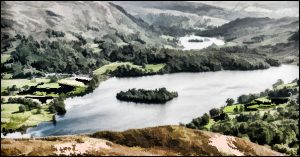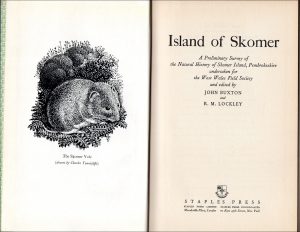“Islands have exercised a fascination on the human imagination. Yet today it is possible to identify a positive need for island experience – an island imperative – in whole sectors of society in developed countries. This condition invites the geographer to investigate the nature and fundamental causes of this ‘lure of the island’….. It can be argued that the enhanced impact of islands on the human imagination is not a passing fad: there is rather an essential contribution of, and by, small islands and their inhabitants to the urban and globalised civilisation of our time”
From an abstract of a paper by FRANÇOISE PÉRON
For an inhabitant, an island is a space representing spatial clarity and identity. For a temporary visitor, an island is a small space riddled by puzzling topographical and infrastructural detail. But are these differences between the attitudes of natives and visitors clear cut?
Islands, seen from a distance, are first and foremost places of the imagination for residents and visitors alike. They have always sparked the imagination with notions of danger, adventure, isolation and even perfection. Islands have lured explorers and been the reason for battles between colonizing empires. Islands have given birth to unique cultures, they have prompted scientists and anthropologists with clues to ecological and cultural beginnings. They have been known to occasionally disappear without a trace.
The tradition of weaving islands into the imagination began with Homer’s Odyssey and is expressed today with the destinations of modern-day holiday cruises. Islands have come to be master symbols and inexhaustible metaphors for so many different aspects of planetary origins and cultural beginnings. Contradictory images of islands, range from the allure of the desert island as a paradise where the world can be made anew, to their roles as prisons, In this respect, from ‘Treasure Island’ to ‘Robben Island’, from the paradise of Thomas More’s ‘Utopia’ to Napoleon’s purgatory on Elba, islands have proved irresistible to humankind’s imagination since prehistoric times. Occupying a singular place in literature, religion and philosophy, islands exert an insistent grip on the human psyche.
Small islands are at the crossroads of human development. For example, It was a small uninhabited island in the English Lake District that inspired the very foundation of the National Trust to protect Britain’s historic heritage: its sale to a private owner frustrated a Lake District admirer so much he vowed never to let it happen again. This tiny island in Lake Grasmere was the focus for the idea that outstanding landscapes and buildings should be protected from commercial development for the benefit of future generations
Artificial islands have a long history in many parts of the world. They date back to the crannogs of prehistoric Britain and Ireland, the ceremonial centres of Nan Madol in Micronesia, and the still extant floating islands of Lake Titicaca. The city of Tenochtitlan, the Aztec predecessor of Mexico City, which was home to 250,000 people when the Spaniards arrived. It stood on a small natural island in Lake Texcoco that was surrounded by countless artificial chinamitl islands. These utilized the shallow lagoon’s surface for plant cultivation. They were built on a structure of willow tree reeds whose root systems strengthened the border of the bed. Products included corn, beans, amaranth, squash, chili, tomatoes and aromatic flowers.
Many artificial islands have been built in urban harbours to provide either a site deliberately isolated from the city or just to ease development in a crowded metropolis. An example of the first type of construction is Dejima (or Deshima), built in the bay of Nagasaki during Japan’s Edo period, as a containment centre for European merchants.
The importance of islands in revealing evolutionary processes has been recognized since Darwin’s work on the Galapagos and Wallace’s research in the Malay Archipelago. Since, then, island biogeography has provided many elegant examples of the evolutionary mechanisms involved in generating biodiversity, including geological processes, plant and animal colonization and species isolation. Archipelagos such as Hawaii and the Galapagos provide examples where cycles of evolutionary radiation have produced replicated patterns of endemic, often bizarre, forms. Yet, the extreme isolation of such islands reduces the interplay between islands and continents—interchange is one-way (islands can be sinks) and limited to rare chance dispersal events. The West Indies and island chains in the Indian Ocean (Madagascar, Comoros, Seychelles, Mascarenes) are remarkable as they are sufficiently old and isolated to have generated endemic forms, but close enough continents to sustain a dynamic two-way interaction with diverse continental landmasses. Size is important in biogeography because small islands have limited land area which restricts the number of habitats.
| Small islands have limited land area and are prone to natural hazards which make them highly susceptible to the effects of climate change, sea-level rise, and extreme events. Their vulnerability is further aggravated by their low adaptive capacity; and the cost of adapting to the changing climate is high as compared to the GDP. Along with climate related drivers, small urbanised islands are also subjected to important local change agents, such as demographic pressure and urbanization, which increases the demand on the local resource base, thereby making them more vulnerable to the changing climate.
Wildlife islands are a special case. Charles Darwin called the Galápagos Islands “a little world within itself.” He was acknowledging that the islands were the outcomes of a sequence of volcanic eruptions, which were occupied by a random oceanic drift of plants and animals. They had only been settled by people over the past three centuries. In fact the uninhabited Galapagos were discovered in 1535 by Fray Tomas de Berlanga, the Bishop of Panama. In the millennia between their formation and the arrival of humankind the islands had been a hive of natural selection that had resulted in the evolution of several unique species. Then it must be remembered that an ecological island is not necessarily an island surrounded by water, but is an area of land, separated by a barrier from the surrounding land, where a natural micro-habitat exists amidst a larger, different ecosystem. Thus, an urban park or garden is an ecological island where the concept of ‘islandness’ applies. Islandness is an heightened awareness that one is living at a slower pace than those on the other side of a barrier. David Platt addressed the question of why islandness is a heightened perception felt by outsiders but rarely by islanders themselves, He concluded that ‘slandness’ is a construct of the mind, a singular way of looking at the world. In particular. he articulated this perspective as perhaps being more important to outsiders. Outsiders for some reason associate themselves with islands more than do islanders themselves. Islanders who understand the concept of islandness instinctively may never feel called-upon to express it in words, except for distinguishing between being ‘on island’ or ‘off-island”. Another way of describing islandness is to define them as thin places. Travel to thin places does not necessarily lead to anything as grandiose as a “spiritual breakthrough,”, but it does disorient. It confuses. We lose our bearings, and find new ones. Or not. Either way, we are jolted out of old ways of seeing the world, and therein lies the transformative magic of travel. This ancient magic may be said to have began to transform humanity when the first peoples migrated out of Africa. This blog is about identifying a positive need for off-islanders to have a personal island experience by seeking out a small island upon which to meditate about ecological and cultural beginnings in relation to things of the heart, One such place out of many is Skomer Island, a 700 acre national nature reserve off the coast of South West Wales. It can be said to have entered mainstream knowledge about semi wild islands in 1946 In that year it was uninhabited and became home to a continuous succession of amateur naturalists who were members of the island’s first field survey party. Like the seabirds themselves, they came to Skomer in April, resided there until October, and then withdrew, leaving the island to its wild inhabitants. The party of explorers aspired to being no more than observers; spectators curious to discover and record the full detail of nature’s way in the isolated compartment of one solitary suboceanic volcanic island. In earlier earlier times Skomer had been visited in the winter by commercial hunters of rabbits. In the summer sheep and cattle were pastured and seabird eggs collected. Even earlier, prehistoric people had settled for a while and farmed the island leaving their mark with hut circles, and stone walls.. There was an abortive attempt at intensive farming in the 19th century. After this, the island gradually became deserted, and its wildlife reverted to a state in which it may have been before the first people ever settled there. Like the Galapagos. Skomer has its own experiment in evolution. Five species of small mammals exist there: the rabbit, a bank-vole, the wood-mouse, the common shrew and the pygmy shrew. Of these, the vole is unique, occurring nowhere else in the world. This is the Skomer Vole (Myodes glareolus skomerensis) a subspecies of the mainland bank vole. There are approximately 20,000 voles on the island; probably modified descendents of ordinary bank voles introduced by human settlers. The Skomer vole is a typical vole in appearance, having a short blunt head, small eyes and ears, a tail about half the length of its head and body and a characteristically reddish tinge to the rich fur along its back. It differs from the common mainland bank-vole (Clethrionomys glareolus) in its larger size, its more massive skull, which has certain structural peculiarities, and in its brighter and lighter furry back. The difference that strikes one immediately is its essential tameness. Cultural ecology is an appropriate starting point to explore mainland/island and island/island relations, and islandness is an appropriate conceptual tool in such labours. Owe Ronström has categorised the following 10 features of islandness of which the first 6 apply to Skomer in its present state as a nature reserve and tourist attraction.
|
Therefore, in terms of its unique volcanic origins, wildlife, and the archeological stories of human settlement, Skomer has many conceptualised windows into the study of islandness. Indeed, it is well placed historically, biologically and geographically to make an essential contribution to grounding the urban and globalised civilisation of our time.
The Island: in imagination and experience

